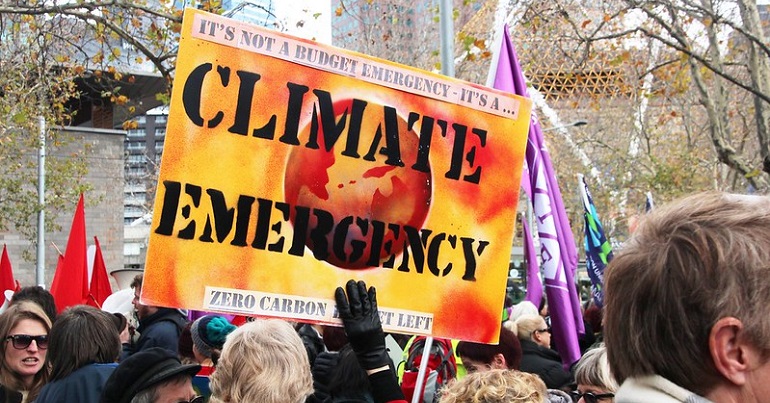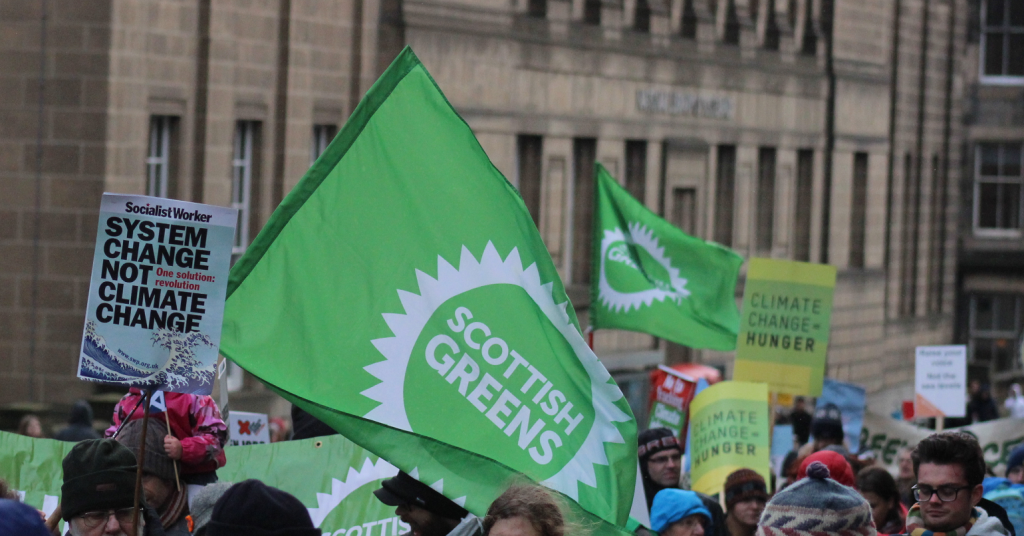Distant targets substituting for action today: The UK’s climate performance in 2020.
2020 has seen net-zero carbon emissions targets go from being an oddity adopted by small island states, Bhutan [1] and Sweden to become a new policy norm across the globe. Less than 18 months ago, the UK set a target for net-zero by 2050, since upgraded to 68% by 2030. Following Biden’s net-zero commitment, there are now 127 countries – responsible for approximately 63% of global emissions and 80% of global GDP – with net-zero targets.
The thinktank, Climate Action Tracker has assessed these pledges and suggests that – if met – they might restrict warming to 2.1 degrees by 2100. This would do little for the bleak prospects for humanity in the 21st century. Not only are these pledges inadequate by every measure, they also risk distracting from meaningful action on the climate.
What’s happening in the UK?
The UK – the host of 2021’s international climate summit – is emblematic of this problem. Since the 2008 Climate Change Act, the UK has had one of the world’s most robust regimes for monitoring climate targets, through five-year carbon budgets and the independent Committee on Climate Change (CCC). The UK has so far met its carbon budgets, with reductions driven by decarbonisation of the electricity sector and it has also ratcheted up its ambition in the manner envisaged by the Paris agreement. It is this which the government points to when claiming the UK as a climate champion.
In reality, the UK makes a pretty poor champion.
The missed targets
The CCC projects that the UK will overshoot it’s 2028 carbon budget, due to a growing policy gap. The UK is not alone in this. Japan, missed it’s Kyoto protocol targets and it remains unclear how it will reach its net zero ambition. China has set an net zero target of 2060, yet in the second half of 2020 has approved even more new coal capacity. Too often what we have seen in the last two decades is the setting of distant targets as a substitute for action today.
Weak targets
The second problem is that the targets themselves are weak. Since the failure of the 2009 Copenhagen climate summit, a tyranny of low expectations has meant that any progress in climate pledges is greeted with ecstasy. The Paris Agreement was designed explicitly to allow countries to adopt weak targets with the hope they would ratchet them up over time.
Climate Tracker’s methodology suggested the initial post Paris targets could result in 4 degrees of warming, by the end of the century. 2020 has seen a dramatic reversal, as the growing climate movement – including the school strikers – has forced countries to ratchet up their targets.
The most dramatic change was China, whose leadership in 2019 talked about an emissions peak in the 2030s and refused to commit to a decline till the USA acted. Their later net zero commitment has unilaterally cut almost 0.3 degrees of end of century warming.
This is a success for EU climate diplomacy, as the bloc has been pushing China to be more ambitious. The EU push itself was prompted by a strong showing for Green Parties in the 2019 European Parliamentary elections. This meant the new commission needed some Green support to take office and encouraged the new head of the commission to see climate action as a way to unite the union. The strong Green showing across Europe was doubtless bouyed on the wave of climate activism that swept Europe at the beginning of 2019.
These targets for developed countries are still not enough. They definitely will not limit warming to the 1.5 degrees that the Global South say is needed to avoid catastrophe and almost certainly will not avoid 2 degrees. And even where progress has been made, it disproportionately puts the burden on the world’s poorest. Rich countries and firms have historically benefited more from emissions and emitted more. Friends of the Earth estimates to account for its fair share, the UK should be looking at domestic emissions reductions of 75% by 2025.
Holes in targets
Moreover, as activists such as Greta Thunberg have made clear, the regime of climate targets is full of holes and injustices. They focus on emissions from within the territory, ignoring those that come from shipping and aviation. Existing net-zero targets often rely on speculative and untested negative emission technologies.
Ignoring exported emissions in other territories is a particular problem in the case of the UK. The UK is burdened with an oversized financial service sector, which is infamous for financing climate chaos around the world.
This financing of our civilisation’s destruction stems from the legacy of empire. London pours money into its former colonies to finance fossil fuel projects, while many of these countries struggle with corrupt governments that are incapable of implementing energy transition, or saying no to the multinationals operating in their borders.
How we meet the targets we have
The government’s 10 point plan for a Green industrial revolution to address this has many problems. It did not offer enough money, address the financial sector or exported emissions. Nor did it close the policy gap in 2028. However, the problem was that it drew it’s thinking from climate targets and focused heavily on emission reductions. It paid lip service to Green jobs and transformative change without really showing it understood what this meant.
Reaching net-zero will require a complete transformation of society. A conservative vision gets there though big industrial projects and technical solutions that allow life to more or less continue. It also gets there too late. Climate justice is absent in every sense. The state focuses on protecting firms and technology rather than peoples’ welfare. Greens offer a different vision, as do other countries around the world.
Climate pledges represent progress if markets and policy actors adjust their expectations to meet them. They only work if they are plausible and the best way to achieve this is to build an unstoppable social movement behind the social changes needed to implement them. A job for 2021?
[1] Bhutan is unique in that is currently one of two countries that is a carbon sink. It is aiming to develop and by seeking to become carbon neutral it is actually committing to head in the wrong direction
PS. We hope you enjoyed this article. Bright Green has got big plans for the future to publish many more articles like this. You can help make that happen. Please donate to Bright Green now.
Image credit: John Englart – Creative Commons





assumes that the older modes are unimportant, and so, for example, there is no harm if increasing automobile traffic causes congestion delay to public transit or creates a barrier to pedestrian travel. From this perspective it would be backward to give public transit or walking Priority over automobile travel. Conventional planning often evaluates transport system performance based primarily on mobility (using indicators such as traffic speed and vehicle operating costs), ignoring other accessibility factors and improvement options. For example, with mobility-based planning, the only practical solution to traffic congestion is to expand roadway capacity. Accessibility-based planning allows other solutions to be considered, including improvements to alternative modes, more accessible land use patterns, and improvement to mobility substitutes. Accessibility-based transport planning tends to support sustainability by expanding the scope of analysis and supporting more resource-efficient solutions. As a result, as much as possible, sustainable transportation indicators should reflect accessibility-based planning.
Measures of national carbon production are patently the wrong measure.
The best measure is individual carbon footprint, and since these things have to be dealt with by national governments, the national “score” would be that of the average citizen.
Then the greatest consumer nations would achieve scores the highest, which of course are the most powerful nations.
Then the empty boasts of “virtue”, for instance GB, would be exposed for what they are. Without that realism and honesty, the whole human world will be without hope.